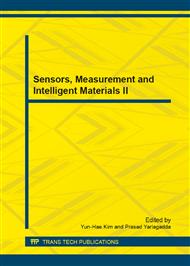p.405
p.411
p.415
p.419
p.423
p.428
p.432
p.436
p.442
A Possibility Estimation Model and its Application
Abstract:
Aiming at some uncertainty problems such as quality inspection of adhesive structure and risk assessment in the practical engineering application, a possibility estimation model is established. Firstly, according to the fuzziness, randomness and uncertainty of the measurement data, a transformation method of possibility distribution with non-single peak values and nonlinearity is proposed from probability density function. Secondly, for possibility distributions of measurement data of each sensor, a kind of possibility fusion rules is put forward, then the fusion distribution is estimated by the possibility mean. Finally the model is applied to the mechanical property estimation of adhesive structure, and the result forecasts the quality. The proposed model with strong applicability, not only provides convenience for the operations among possibility distributions, but also offers new ideas and new methods to deal with uncertain problems.
Info:
Periodical:
Pages:
423-427
Citation:
Online since:
December 2013
Authors:
Price:
Сopyright:
© 2014 Trans Tech Publications Ltd. All Rights Reserved
Share:
Citation:


